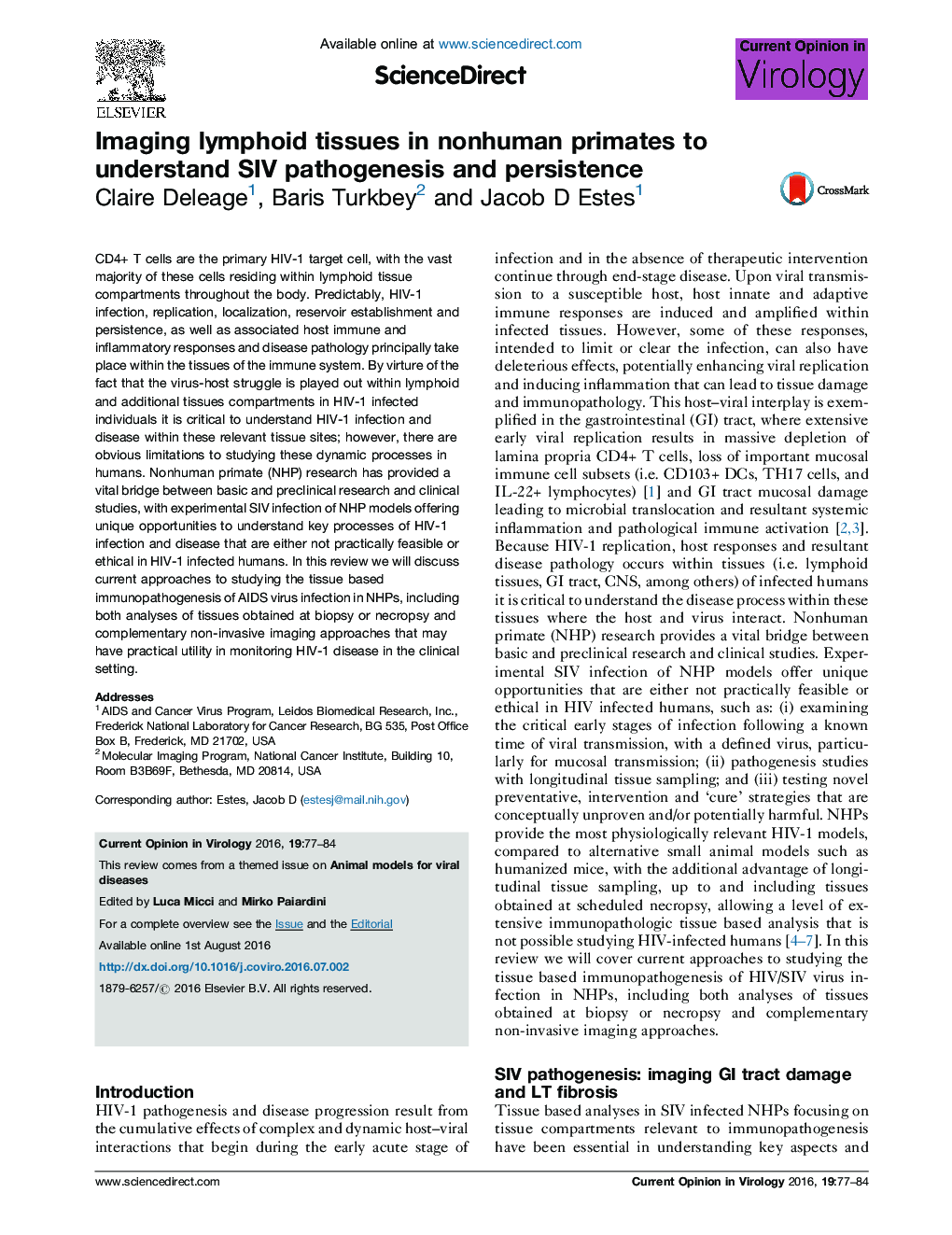| Article ID | Journal | Published Year | Pages | File Type |
|---|---|---|---|---|
| 2473188 | Current Opinion in Virology | 2016 | 8 Pages |
•NHP research provides a vital bridge between basic/preclinical research and clinical studies.•Imaging approaches of SIV NHP models afford unique insights into HIV-1 infection and disease.•NHP models provided direct and unequivocal evidence that GI tract damage leads to systemic immune activation.•Lymphoid tissue fibrosis is a hallmark pathological feature of lentiviral infections.•B cell follicles are important tissue sites for viral persistence during cART.
CD4+ T cells are the primary HIV-1 target cell, with the vast majority of these cells residing within lymphoid tissue compartments throughout the body. Predictably, HIV-1 infection, replication, localization, reservoir establishment and persistence, as well as associated host immune and inflammatory responses and disease pathology principally take place within the tissues of the immune system. By virture of the fact that the virus-host struggle is played out within lymphoid and additional tissues compartments in HIV-1 infected individuals it is critical to understand HIV-1 infection and disease within these relevant tissue sites; however, there are obvious limitations to studying these dynamic processes in humans. Nonhuman primate (NHP) research has provided a vital bridge between basic and preclinical research and clinical studies, with experimental SIV infection of NHP models offering unique opportunities to understand key processes of HIV-1 infection and disease that are either not practically feasible or ethical in HIV-1 infected humans. In this review we will discuss current approaches to studying the tissue based immunopathogenesis of AIDS virus infection in NHPs, including both analyses of tissues obtained at biopsy or necropsy and complementary non-invasive imaging approaches that may have practical utility in monitoring HIV-1 disease in the clinical setting.
